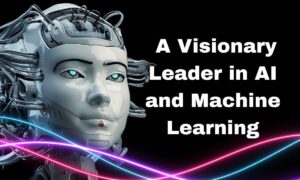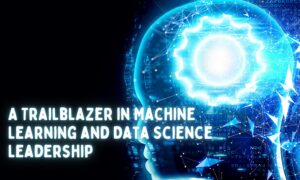Welcome to the world of machine learning, where data patterns come to life and transform businesses across industries. In this digital era, we are continuously inundated with vast amounts of complex data that can seem overwhelming at times. But fear not! Machine learning is here to decipher these intricate patterns and unlock invaluable insights that can revolutionize decision-making processes. Whether you’re a seasoned professional or just starting your journey into the realm of data science, this blog post will serve as your compass in navigating through the exciting landscape of machine learning. We’ll unravel the mysteries behind algorithms, dive into real-life applications, and explore how this cutting-edge technology is reshaping our understanding of data. Join us on an enlightening adventure as we demystify complex data patterns together. By the end of this blog post series, you’ll not only have a solid grasp on machine learning concepts but also gain practical knowledge to take your business strategies to new heights.
What is Machine Learning?
In its simplest form, machine learning is a way of teaching computers to learn from data. This can be done in a number of ways, but the most common is to give the computer a set of training data and then let it try to find patterns in that data. The more data you give it, the better it will be at finding patterns.
Of course, not all data is created equal. Some data is much more useful for learning than others. This is where domain knowledge comes in: knowing which types of data are likely to be most helpful for a given task. For example, if you wanted to build a machine learning system to identify faces in pictures, you would want to use a training set that included a lot of pictures of faces (ideally, different faces in different positions and lighting conditions).
Once the computer has been trained on a dataset, it can then be tested on new data to see how well it performs. If it does well, great! If not, there are usually two options: either get more and better training data or try a different machine learning algorithm.
Types of Machine Learning Algorithms
There are three main types of machine learning algorithms: Supervised Learning, Unsupervised Learning, and Reinforcement Learning.
Supervised Learning is where you have input variables (x) and an output variable (y), and you use an algorithm to learn the mapping function from the input to the output. Y is usually a dependent variable that depends on X. Common examples of supervised learning are Regression and Classification.
Unsupervised Learning is when you only have input data (X) and no corresponding output variables. The goal of unsupervised learning is to model the underlying structure or distribution of the data in order to learn more about it. It is often used for exploratory data analysis to find hidden patterns or groupings in the data. Common unsupervised learning algorithms are Clustering and dimension Reduction.
Reinforcement Learning is a type of machine learning algorithm that interacts with its environment by producing actions and discovering errors or rewards. The aim is for the machine learner to learn what action(s) lead to maximum reward through trial-and-error methods. Q-learning is a popular reinforcement learning algorithm used today.
How Does Machine Learning Work?
Much of machine learning is based on a simple concept: teaching computers to learn from data. This process can be divided into two main types of approaches: supervised and unsupervised learning.
Supervised learning is where the computer is given a set of training data and the desired output, and it learns to produce the correct output for new inputs. For example, if you wanted a computer to learn how to identify pictures of cats, you would give it a large dataset of pictures that have been labeled “cat” or “not cat”. After processing this data, the computer would then be able to take in new pictures and classify them accordingly.
Unsupervised learning is more open-ended and doesn’t require labels. Instead, the computer looks for patterns in the data itself. For example, if you gave a computer a dataset of images, it might group them together by color, shape, or other similarities. While this might not be as immediately useful as supervised learning, it can still lead to interesting insights about the data.
Benefits of Machine Learning
Machine learning is a field of artificial intelligence that deals with the construction and study of algorithms that can learn from and make predictions on data. These algorithms are used in a variety of ways, such as detecting fraudulent activity, recommending items to users, or captioning images.
Machine learning is advantageous over traditional statistical methods because it can automatically detect complex patterns in data and make predictions without being explicitly programmed to do so. Additionally, machine learning is scalable; it can be applied to small data sets as well as large ones. Machine learning is flexible; it can be used for supervised learning (where the algorithm is given training data), unsupervised learning (where the algorithm is not given training data), or semi-supervised learning (where the algorithm is given some training data).
Examples of Machine Learning Applications
1. Machine learning can be used to develop more effective medical treatments.
2. Machine learning can be used to improve the accuracy of weather forecasts.
3. Machine learning can be used to create more efficient algorithms for search engines.
4. Machine learning can be used to make better recommendations for online shoppers.
Challenges Faced in Implementing Machine Learning Projects
One of the key challenges in implementing machine learning projects is data preparation. This includes tasks such as data cleaning, feature selection and engineering, and creating new features from existing ones. Machine learning algorithms require large amounts of data to be effective, so these tasks are essential in order to get good results. Another challenge is choosing the right algorithm for the task at hand. There are many different algorithms available, and each has its own strengths and weaknesses. It is important to select an algorithm that is well suited to the problem you are trying to solve. Another challenge is dealing with overfitting. This occurs when a machine learning model performs well on training data but does not generalize well to new data. Overfitting can be avoided by using techniques such as cross-validation and regularization.
Conclusion
Machine learning is a powerful tool for making sense of complex data patterns. It has already been applied in many diverse fields, from finance to healthcare, and its potential applications are only limited by our imagination. By combining the power of statistics with computer science, machine learning allows us to discover meaningful insights from large datasets that might otherwise be uninterpretable.



































